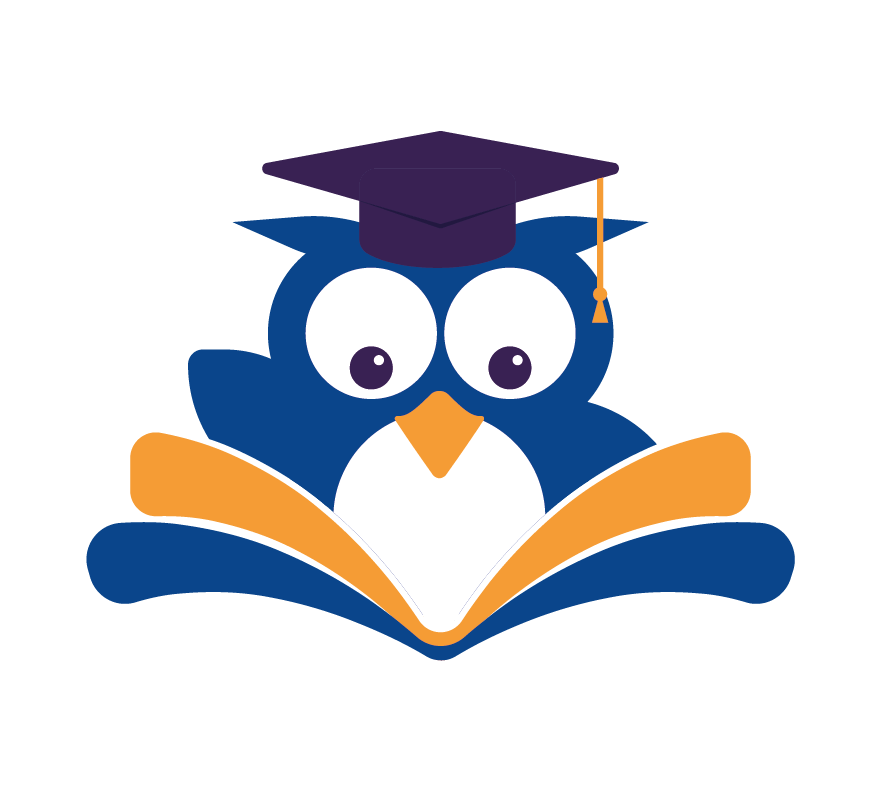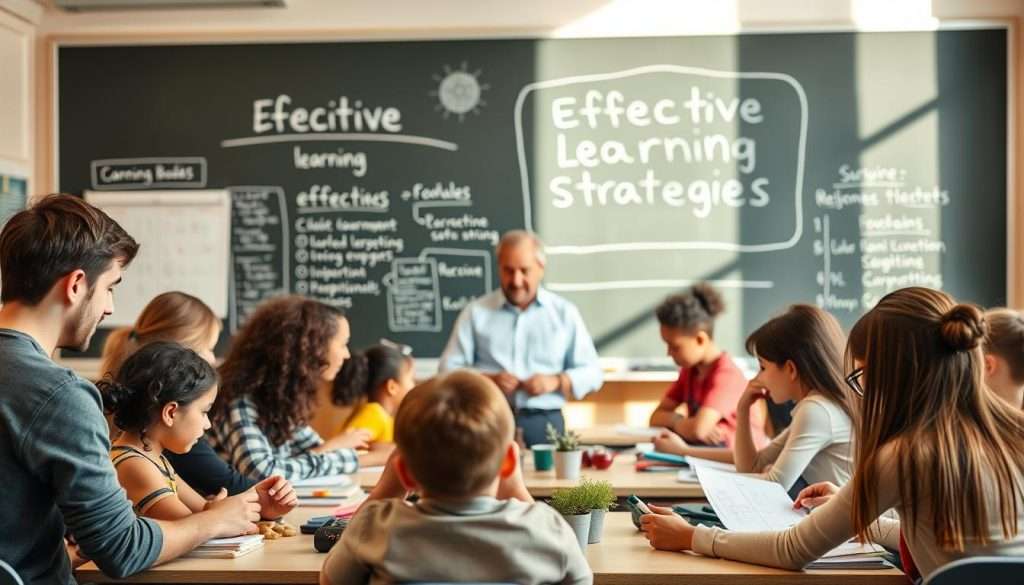Learning how to learn is a skill that can change your life. It’s something we often forget, but it’s key to success in many areas.
Mastering effective learning strategies can keep you ahead. The right approach makes learning fun and rewarding.
As we look at the best methods for learning, you’ll learn to use your study time well. We’ll share practical tips and techniques for better learning.
Key Takeaways
- Understanding the importance of learning how to learn
- Discovering effective learning strategies
- Learning how to stay motivated
- Practical tips for efficient studying
- Techniques for retaining information
Understanding the Science of Learning
Learning science shows our brains respond well to certain methods. These methods make learning easier. To learn better, we must know how our brains handle new info.
How Your Brain Processes New Information
When we get new info, our brains start a process. This process is to encode, store, and recall the info. It begins with encoding, where our brains first process and understand the info.
The Encoding Process
In encoding, our brains sort new info based on its importance and what we already know. This step is key for learning well, as it affects how we keep the info.
Working Memory vs. Long-Term Memory
Info we find important moves from working memory to long-term memory. This is where it stays for us to recall later. Knowing the difference between these memories helps us learn better.
| Memory Type | Characteristics | Role in Learning |
|---|---|---|
| Working Memory | Limited capacity, temporary storage | Processes new information |
| Long-Term Memory | Large capacity, long-term storage | Stores information for later retrieval |
The Role of Neuroplasticity in Learning
Neuroplasticity, or the brain’s ability to change, is key in learning. By practicing new skills and challenging our brains, we can make our neural connections stronger. This improves our learning ability.
Memory Formation and Retention Principles
To keep info well, we must grasp memory formation principles. Techniques like spaced repetition and interleaving help a lot. They make learning more efficient.
By using these principles and knowing how our brains handle new info, we can find better ways to learn. This leads to more effective learning strategies.
Identifying Your Learning Style
Learning styles differ from person to person. Knowing yours can help you master new skills better. Some learn fast, while others take more time. But, with the right method, everyone can achieve their goals.
Visual, Auditory, Reading/Writing, and Kinesthetic Learners
There are four main learning styles: Visual, Auditory, Reading/Writing, and Kinesthetic.
– Visual learners like images and diagrams.
– Auditory learners do well with listening to information.
– Reading/Writing learners prefer text.
– Kinesthetic learners learn by doing hands-on activities.
How to Determine Your Primary Learning Style
To find your learning style, use self-assessment techniques and notice your natural preferences.
Self-Assessment Techniques
Think about your past learning. Ask yourself:
– Do you remember things better when you see them written or when you hear them?
– Do you like doing things by hand or reading about them?
Observing Your Natural Learning Preferences
Notice how you naturally learn new things. Do you like drawing diagrams or taking detailed notes? This might show your learning style.
| Learning Style | Preferred Methods |
|---|---|
| Visual | Diagrams, charts, images |
| Auditory | Listening to lectures, discussions |
| Reading/Writing | Reading texts, taking notes |
| Kinesthetic | Hands-on activities, experiments |
Adapting Learning Methods to Your Style
After finding your learning style, adjust your study methods to learn more efficiently. For example, if you’re a visual learner, add more diagrams and visual aids to your study routine.
Setting Effective Learning Goals
Learning isn’t just about getting more knowledge. It’s about setting and reaching meaningful goals. To enhance your learning process, start by defining what you want to achieve.
Creating SMART Learning Objectives
To set effective learning strategies, make SMART (Specific, Measurable, Achievable, Relevant, Time-bound) objectives. This method makes your goals clear and reachable. It helps you stay focused on what’s key.
Breaking Down Complex Skills into Manageable Parts
Complex skills can feel too big. But breaking them down into smaller parts makes them easier. This is where successful learning methods shine.
Skill Decomposition Techniques
Skill decomposition is about breaking down complex skills into parts. This way, you can learn one part at a time. It makes learning less scary.
Creating Learning Milestones
After breaking down a skill, set milestones to track your progress. These milestones mark your growth. They keep you motivated.
Tracking Progress and Adjusting Goals
As you work towards your goals, track your progress. This lets you adjust your plan as needed. By regularly checking your progress, you can improve your effective learning strategies. This helps you enhance your learning process.
The Best Way to Learn Anything: A Proven Framework
To master new skills quickly, you need a proven framework. It should include tips for learning efficiently and help you master new skills fast.
The Feynman Technique is a powerful method to unlock your potential. It involves choosing a concept, teaching it to a 12-year-old, refining, and testing. This technique is part of a broader framework that includes the 80/20 principle, deliberate practice, and spaced repetition.
The 80/20 Principle in Learning
The 80/20 principle says 80% of your results come from 20% of your efforts. In learning, focus on the most critical material for the best results.
Deliberate Practice vs. Passive Learning
Deliberate practice is a focused, structured way to learn. It’s different from passive learning, where you just go through the motions. Deliberate practice involves setting goals, getting feedback, and pushing beyond your comfort zone.
Structuring Deliberate Practice Sessions
To structure deliberate practice, start by identifying your weaknesses. Set specific goals for improvement. For example, if learning a new language, focus on grammar one day and vocabulary the next.
Getting Effective Feedback
Getting effective feedback is key in deliberate practice. This can come from a teacher, peer, or self-assessment. Use this feedback to adjust your practice.
Spaced Repetition and Interleaving Techniques
Spaced repetition involves reviewing material at longer intervals to solidify it in your memory. Interleaving means switching between different types of material to deepen understanding.
| Technique | Description | Benefit |
|---|---|---|
| 80/20 Principle | Focus on critical material | Maximizes results |
| Deliberate Practice | Structured and focused learning | Improves skills rapidly |
| Spaced Repetition | Review at increasing intervals | Improves retention |
By using these techniques, you can improve knowledge retention and master new skills more efficiently.
Effective Note-Taking Strategies
How you take notes greatly affects your understanding and memory of new ideas. It’s not just about writing down information. It’s about processing and keeping it.
The Cornell Method Step-by-Step
The Cornell Method is a structured way to take notes. It divides your paper into two columns. The narrower left column is for keywords and questions. The wider right column is for your notes.
- Divide your paper into three sections: a header at the top, a narrow column on the left, and a wide column on the right.
- Record notes in the wide column during a lecture or while reading.
- Use the left column to note keywords, questions, or summaries after the lecture.
- Summarize the main ideas at the bottom of the page.
Mind Mapping for Visual Learners
Mind mapping is a visual technique for note-taking. It’s great for visual learners as it helps organize information.
To make a mind map, start with a central idea. Then, branch out to related topics and subtopics. Use colors, symbols, and images to make it engaging and memorable.
Digital vs. Handwritten Notes: What Science Says
The debate on digital vs. handwritten notes is ongoing. Studies show handwritten notes can improve retention and understanding. They engage the brain more.
However, digital notes have their benefits, like easy organization and access. The best method depends on your preference.
Best Tools for Digital Note-Taking
Popular digital note-taking tools include:
- Evernote
- OneNote
- Simplenote
Techniques for Handwritten Notes
For handwritten notes, using different colors, creating diagrams, and summarizing actively can help retain information.
| Note-Taking Method | Advantages | Disadvantages |
|---|---|---|
| Cornell Method | Organized, systematic | Can be time-consuming |
| Mind Mapping | Visual, engaging | Can be chaotic if not done properly |
| Digital Notes | Easily accessible, organizable | Can be distracting |
| Handwritten Notes | Better retention, active engagement | Can be bulky, hard to organize |
Leveraging Technology for Accelerated Learning
Using technology can make learning more fun and effective. With the right digital tools, you can master new skills quickly and well.
AI-Powered Learning Tools
AI tools are changing education. They offer learning experiences that fit your needs.
Language Learning Applications
Apps like Duolingo make learning languages fun. They have interactive lessons and quizzes to keep you interested.
Subject-Specific Learning Software
There’s software for specific subjects like math, science, and coding. These tools have interactive simulations and feedback.
Spaced Repetition Apps and Software
Spaced repetition helps you remember better. Apps like Anki use this method for effective learning.
- Anki: Uses flashcards and spaced repetition for memorization.
- Quizlet: Offers study modes and games for many subjects.
Online Courses and Interactive Learning Platforms
Online courses and platforms offer deep learning experiences. Sites like Coursera, Udemy, and Khan Academy have courses on many topics.

Adding these tech tools to your learning can boost your efficiency. You’ll reach your goals faster.
Measuring and Optimizing Your Learning Progress
Tracking your learning progress is more than just seeing if you’re doing well. It’s also about finding what you need to work on. To reach your learning goals, knowing how you’re doing is key. This means using self-testing, tracking your progress, and changing your approach based on what you learn.
Effective Self-Testing Methods
Self-testing is a great way to make sure you remember what you’ve learned. It helps you find out what you don’t know yet. By trying to remember information, you make your memory stronger and keep more information in your mind.
Creating Personal Knowledge Assessments
To make good self-tests, first pick out important ideas and facts you want to check. You can use flashcards, make quizzes, or write down what you’ve learned in your own words. For example, you can use online tools like Quizlet to make digital flashcards.
Using Retrieval Practice
Retrieval practice means trying to remember information from memory instead of just reading it again. You can do this with quizzes or by trying to recall important points without looking at your notes. Studies show that retrieval practice works better than just re-reading.
Tracking Learning Metrics
To get better at learning, you need to keep track of how you’re doing. This can be by writing in a learning journal, tracking how long you study, or checking your scores on self-tests. By looking at these numbers, you can see what’s helping and what needs more work.
| Learning Metric | Description | Example |
|---|---|---|
| Time Spent Learning | Tracking the amount of time dedicated to learning activities. | Logging 2 hours of study time daily. |
| Self-Test Scores | Monitoring performance on self-tests to gauge understanding. | Achieving 80% on a practice quiz. |
| Learning Journal Entries | Recording insights, questions, and summaries of what you’ve learned. | Writing a summary of key concepts learned each day. |
Adjusting Your Approach Based on Results
After you’ve looked at your learning progress, it’s time to change your strategy if needed. If you’re struggling with certain topics, you might need to go back to them or try a different way of learning. Being flexible and adaptable is important for improving your learning.
By using these methods, you can make sure you’re learning well and moving forward towards your goals.
Overcoming Learning Plateaus and Obstacles
Running into a learning plateau can be really tough. But knowing the signs and how to tackle them can change everything. It’s key to spot when you’re stuck and have plans to move past it.
Recognizing and Breaking Through Plateaus
Learning plateaus happen when you don’t see progress, even when you’re trying hard. It’s a normal part of learning, but there are signs that show you’ve hit a wall.
Signs You’ve Hit a Learning Plateau
- Despite consistent practice, you see no improvement.
- You feel stuck and unsure about how to proceed.
- Your motivation begins to wane due to lack of progress.
Strategies to Overcome Stagnation
To get past a learning plateau, try these tips:
- Change your learning environment to stimulate your mind.
- Seek feedback from peers or mentors to identify areas for improvement.
- Adjust your learning schedule to include more variety and challenge.
Stepping away from your learning material can also help. It can give you a fresh view when you come back.
Managing Frustration and Learning Fatigue
Frustration and fatigue often come with learning plateaus. It’s important to handle these feelings to keep moving forward.
To deal with frustration, try:
- Practice self-compassion and acknowledge your efforts.
- Take regular breaks to avoid burnout.
- Engage in activities unrelated to your learning to refresh your mind.
The Power of Taking Strategic Breaks
Strategic breaks are not about giving up. They’re about refreshing your mind. These breaks can help you come back to your learning with more energy and focus.
Here’s a look at different break strategies:
| Break Strategy | Description | Benefits |
|---|---|---|
| Short Breaks | 5-10 minute breaks every hour | Reduces burnout, improves focus |
| Activity Breaks | Engaging in a different activity | Refreshes the mind, reduces stress |
| Relaxation Breaks | Meditation or deep breathing exercises | Calms the mind, enhances mental clarity |
By using these strategies, you can improve your learning and get past obstacles more easily.

Social Learning: The Collaborative Advantage
Learning with others can change your educational journey. You can get new insights, stay motivated, and understand subjects better. This is thanks to a community of learners.
Finding Learning Communities and Mentors
To use social learning, find groups that match your interests. Look for online forums, social media groups, or local meetups. Mentors can offer valuable guidance. They help with complex topics and give personalized advice.
Teaching Others to Reinforce Your Knowledge
Teaching others helps you understand better. When you explain a concept, you get to know it more deeply. The Feynman Technique shows this by teaching a concept to a 12-year-old.
The Feynman Technique
This method breaks down complex info into simple parts. It helps you find knowledge gaps and solidify your understanding.
Creating Explanatory Content
Creating content, like blog posts or videos, reinforces your knowledge. Explaining concepts in your own words improves retention and understanding.
| Learning Method | Benefits | Tools/Resources |
|---|---|---|
| Community Learning | Stay motivated, gain new insights | Online forums, social media groups |
| Teaching Others | Reinforce knowledge, identify gaps | Feynman Technique, creating explanatory content |
| Mentorship | Personalized guidance, navigate complex topics | Mentorship programs, experienced professionals |
Accountability Partners and Study Groups
Working with accountability partners or joining study groups improves learning. These collaborations keep you on track, discuss tough topics, and learn from others.
Conclusion
We’ve looked into the science of learning and found your learning style. We’ve also talked about ways to learn faster. By using these tips, you’re getting closer to your goals.
Learning how to learn is a powerful skill. It can make you 10 times better at learning. Just a couple of hours of learning about these ideas can change how you learn. It can make learning fun and effective.
To learn best, mix different learning strategies, stay focused, and be patient. Keep trying new methods, use technology, and work with others. This will help you learn more and keep your knowledge strong.

